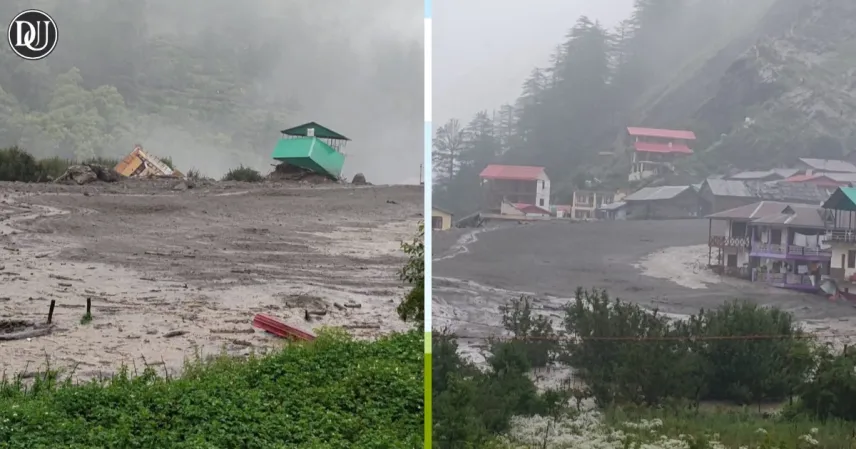The recent news out of Uttarkashi, you know, it just completely took me by surprise—like, in the worst way. It’s hard to wrap your head around a cloudburst that just... swallows a whole village. The images coming out, honestly, they’re haunting.
The Utter Devastation 🌧️
Just thinking about Dharali, this small, incredibly beautiful place in Uttarkashi—it’s been absolutely wiped out. Reports say flash floods, triggered by a massive cloudburst, swept through, leaving behind a trail of unimaginable destruction. Homes, hotels, basically everything in its path, just gone. It’s not just a few houses, we’re talking entire sections of a village, washed away. You see these places on Instagram, all serene and picturesque, and then boom, nature just decides it’s had enough. Is that really surprising given the monsoon season? Maybe not always, but the sheer force of it this time, it feels different.
A Mountain's Fury 🏞️
What I'm reading suggests the cloudburst happened, and then instantly, this wall of water, debris, everything, just cascaded down. It hit Dharali, near Harsil, with such intensity. These mountain towns, they're so vulnerable, perched precariously, and when something like this happens, there's just nowhere to run. It reminds you, doesn't it, how fragile things really are. I mean, we build and we build, but a force of nature, especially in a region like the Himalayas, can just undo decades of effort in minutes. It’s sobering, truly.
The Human Cost 💔
The numbers are still fluctuating, which is always the worst part, but already there are confirmed deaths – at least four confirmed last I checked, and over sixty people feared trapped or missing. Sixty. Just imagine the panic, the desperation of families waiting for news. Rescue operations are, of course, underway, with teams trying to reach affected areas, but access must be a nightmare. I can't even begin to fathom what it's like to be there, searching through the rubble, hoping to find someone, anyone, alive. The toll could rise significantly, which is just gut-wrenching to think about. Every life lost, every person missing, it’s a story, a family torn apart. It’s not just statistics, you know?
Why This Keeps Happening 🌍
You always hear about Uttarakhand and these kinds of disasters, right? And it makes you wonder why. A lot of it comes down to geography – the Himalayas are geologically young, still unstable, prone to landslides. Then you add the monsoon, which is crucial for agriculture but also brings intense, unpredictable rainfall. Cloudbursts, specifically, are these extremely localized, intense downpours in a short period. Couple that with changing climate patterns, and things just seem to be getting more extreme. Maybe it’s warmer, more moisture in the atmosphere, leading to more intense events. Could be wrong, but it feels like these "one-off" events are becoming less and less rare, honestly. It’s a trend that really worries me.
Echoes of Past Tragedies 🚧
Uttarakhand has seen its share of devastating floods and landslides. Remember the Kedarnath floods? That was back in 2013, I think, and it was just horrific. Thousands lost. These events, they leave scars, not just on the land but on the people. And you see the pattern repeat. It’s like the region is constantly battling against its own natural beauty, which can turn so ferocious so quickly. There's so much development happening in these fragile zones too – roads, hydropower projects, tourist infrastructure – and you have to ask if that contributes to the vulnerability. It’s a tough balance, isn't it? Progress versus environmental impact, especially in such a sensitive ecosystem.
The Road Ahead 🤝
Recovery from something like this isn’t quick, or easy. It's a long, arduous process that involves rebuilding not just homes, but lives, livelihoods, trust. The local economy in these areas relies so heavily on tourism and pilgrimage, and when something like this happens, it just grinds everything to a halt. It affects everyone, from the small shop owner to the hotel manager. The government and various aid agencies will step in, sure, but the community itself has to pick up the pieces. And they do, somehow. They always show incredible resilience, but at what cost, you know? It's just a reminder of how interconnected everything is – the environment, the economy, the lives of ordinary people. It just breaks my heart seeing it.
Anyway, just wanted to put that out there. It’s been on my mind since I saw the news pop up. Hope things get better for the people there soon.










